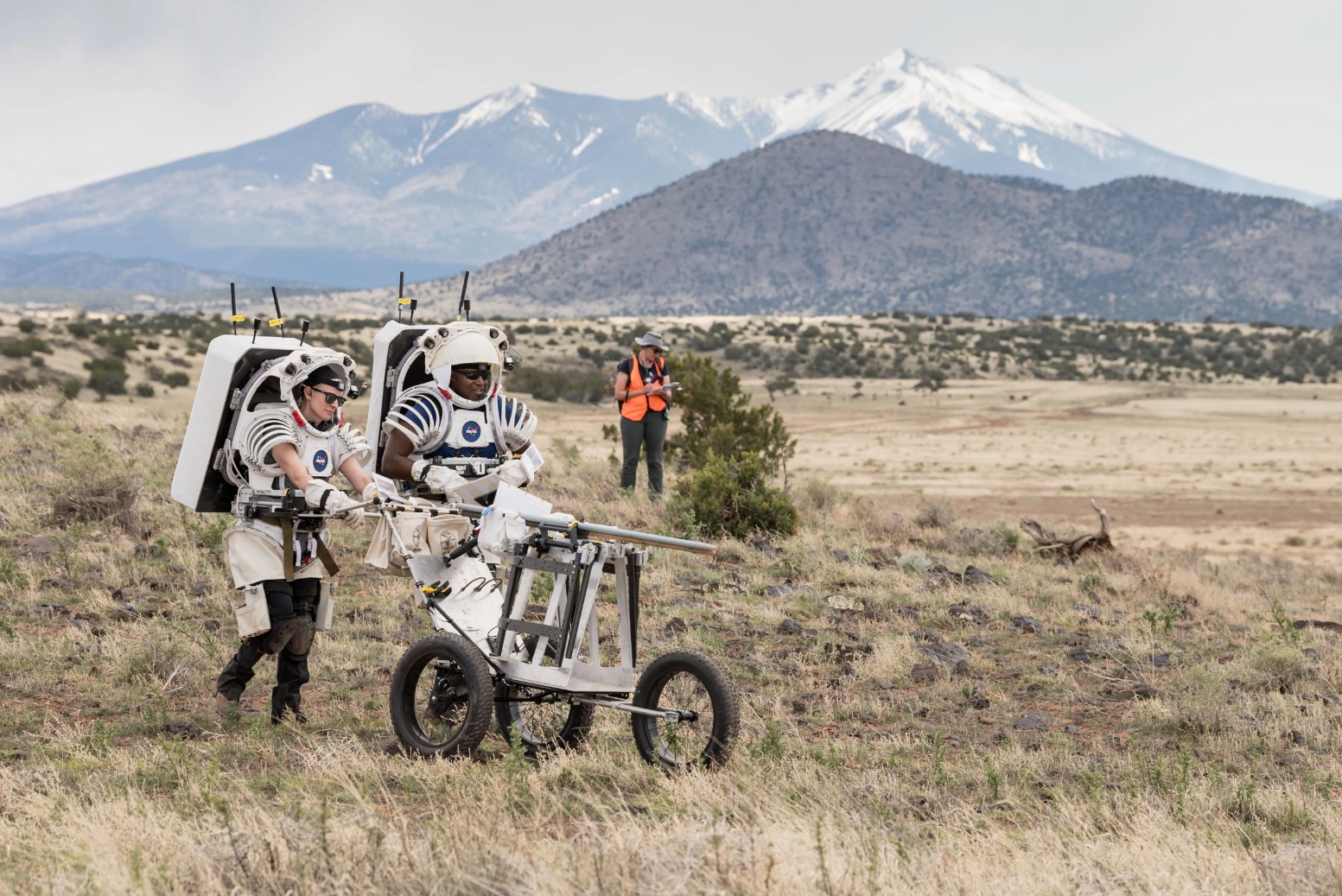In just a few short years, NASA hopes to put humans back on the lunar surface. The first moonwalk in more than 50 years is scheduled for no earlier than September 2026 as part of the Artemis III mission. In preparation, astronauts, scientists, and flight controllers are conducting simulated spacewalks here on Earth.
“Field tests play a critical role in helping us test all of the systems, hardware, and technology we’ll need to conduct successful lunar operations during Artemis missions,” said Barbara Janoiko of NASA’s Johnson Space Center. “Our engineering and science teams have worked together seamlessly to ensure we are prepared every step of the way for when astronauts step foot on the Moon again.”
Astronauts Kate Rubins and Andre Douglas donned mock spacesuits and test gear for a week of simulated moonwalking near Flagstaff, Arizona, where a volcanic desert served as a stand-in for the lunar surface.

NASA/Josh Valcarcel
The tests were multipurpose, making sure that communications protocols with mission control were effective, putting technological devices that will used by moonwalkers through their paces, and doing dry runs of science-related activities, such as gathering geology samples.
The technology tested included an augmented reality visor that could provide navigational information to astronauts, helping them stay oriented and relocate the lunar lander in an emergency.
The test also simulated the communications procedures, allowing both astronauts and ground-based- teams to work together remotely to retrieve the most valuable geological samples and problem-solve in real-time.
“During Artemis III, the astronauts will be our science operators on the lunar surface with an entire science team supporting them from here on Earth,” said Cherie Achilles, science officer for the test at NASA’s Goddard Space Flight Center in Greenbelt, Maryland. “This simulation gives us an opportunity to practice conducting geology from afar in real-time.”

All told the astronauts performed four ‘moonwalks’ and six technology demonstrations over the course of the week. These activities represent the fifth in a series of field tests, and are the “highest fidelity Artemis moonwalk mission simulation to date,” according to a NASA press release.
Artemis III is targeting the lunar south pole, which is a new environment for humans, far removed from the landing sites of the Apollo mission of 1969-72. The permanently shadowed craters of the south pole are expected to hold water ice, a valuable resource in space not just as a refreshing drink, but also as a source of the primary ingredients (hydrogen and oxygen) needed to make rocket fuel.
Rubins and Douglas’s space suits were open-sleeved for the Arizona desert, but prototypes of the actual spacesuits, currently under development by Axiom Space, are also undergoing testing. Future tests will have them put through their paces underwater at NASA’s Neutral Buoyancy Laboratory in Houston, Texas.
Learn More:
“NASA Tests Technology, Practices Artemis Moonwalks in Arizona Desert.” NASA.

